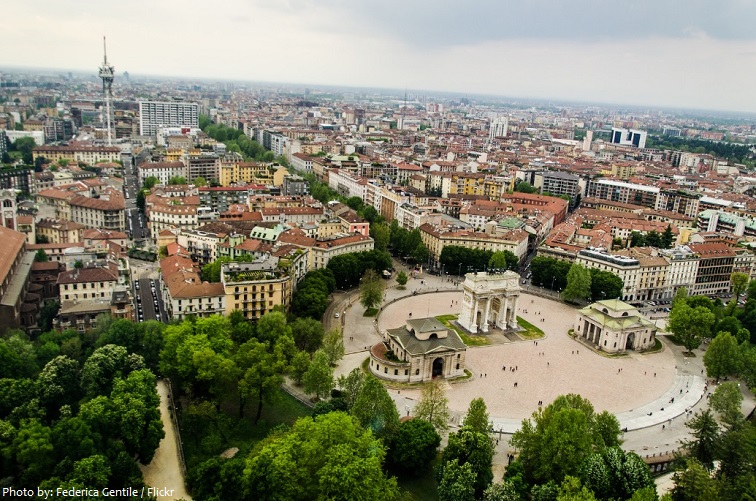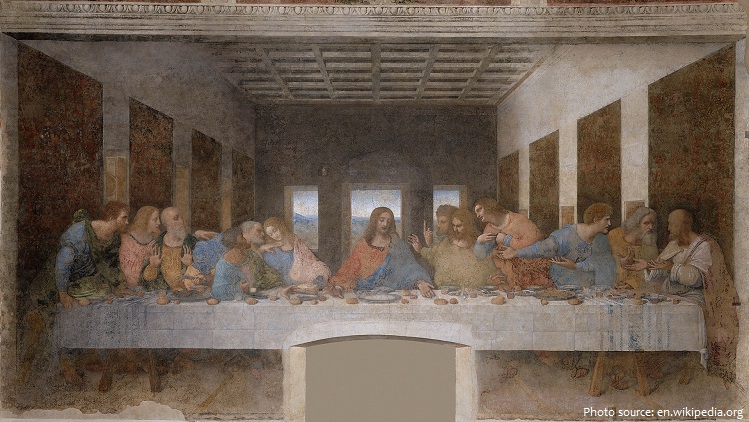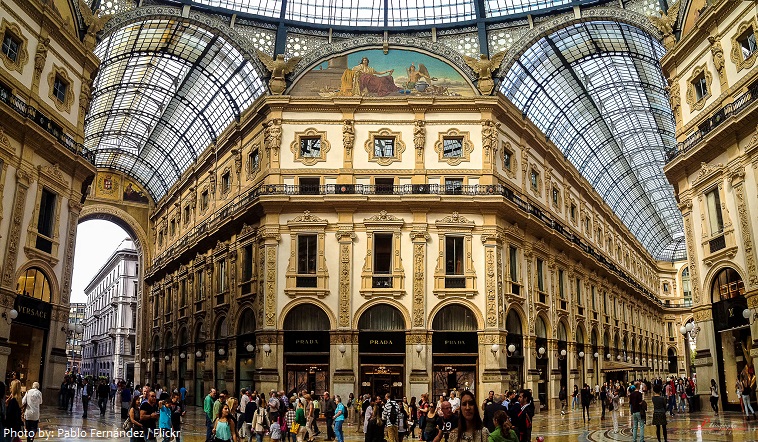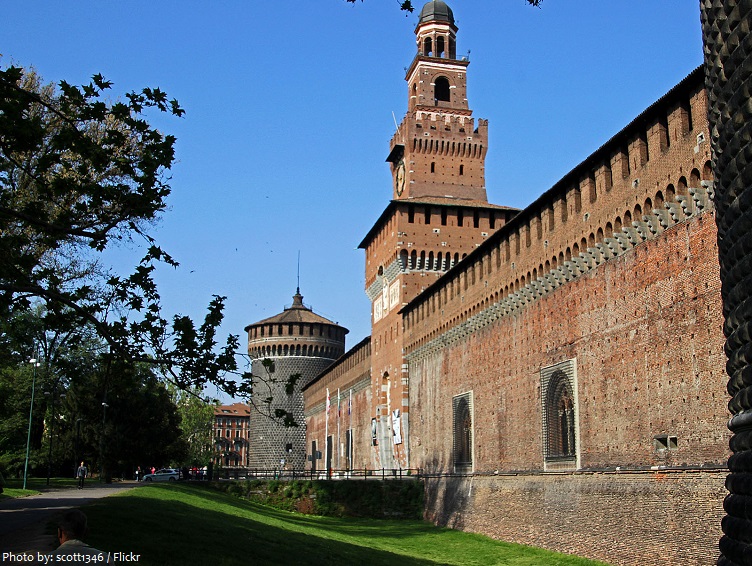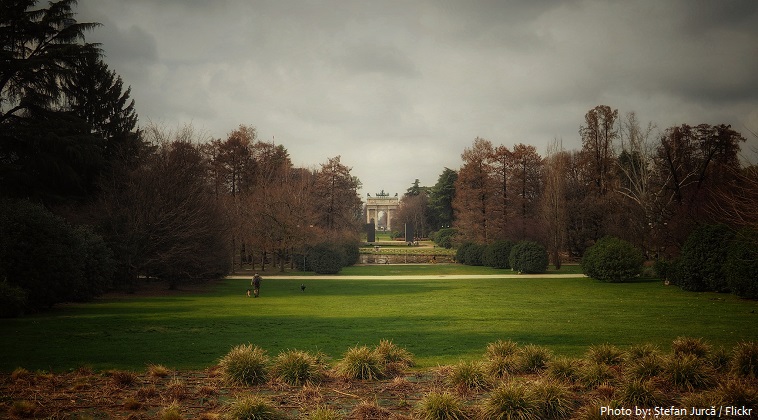Milan is the capital of the Milano Provence and of the Lombardy Region, northern Italy.
The city is located in the north-western section of the Po Valley, approximately halfway between the river Po to the south and the foothills of the Alps with the great lakes (Lake Como, Lake Maggiore, Lake Lugano) to the north, the Ticino river to the west and the Adda to the east.
As of October 2018, the population of Milan is about 1.4 million people. Its metropolitan area has 3.3 million people. It is the second biggest city in Italy (after Rome).
Milan covers a total area of 182 square kilometers (70 square miles).
The city’s land is flat, the highest point being at 122 meters (400 ft) above sea level.
Milan was first settled more than 2500 years ago.
Mediolanum was founded by Insubres, a Celtic people. It was captured by the Romans in 222 BC. Milan became very successful under the Roman Empire.
Milan served as capital of the Western Roman Empire from 286 to 402 and the Duchy of Milan during the middle and early modern age.
Milan was ruled by the Spanish in the 1500s and the Austrians in the 1700s.
During the Renaissance and the Romantic periods, Milan was a major cultural center in the whole of Europe, famous for its literature and opera.
During the WW2, the city was badly affected by Allied bombings and during the 1950s and 1960s the city grew into being the wealthy and industrial metropolis it is today.
Today, Milan is widely regarded as a global capital in industrial design, fashion and architecture. It is a major national and international center of the performing arts, most notably opera.
The city hosts La Scala operahouse, considered one of the world’s most prestigious, having throughout history witnessed the premieres of numerous operas, such as Nabucco by Giuseppe Verdi in 1842, La Gioconda by Amilcare Ponchielli, Madama Butterfly by Giacomo Puccini in 1904, Turandot by Puccini in 1926, and more recently Teneke, by Fabio Vacchi in 2007.
Milan Cathedral or Duomo di Milano is the cathedral church of Milan. Dedicated to St Mary of the Nativity, it is the seat of the Archbishop of Milan. It is the second largest church in Italy after St. Peter’s Basilica in Rome and the third largest catholic church in the world..
Designed and built in the late 1400s by renowned Renaissance architect Donato Bramate, the Church of Santa Maria della Grazie is best known for its most famous artifact: The Last Supper by Leonardo da Vinci. Despite a 21-year-long restoration process completed in 1999, the painting gives only hints of its original glory, yet its artistry is so great that viewing it is still a powerful and moving experience for many visitors. Only 25 visitors are allowed to view the masterpiece at a time, making reservations mandatory for the must-see masterpiece.
The Galleria Vittorio Emanuele II is Italy’s oldest active shopping mall and a major landmark of Milan. Housed within a four-story double arcade in the center of town, the Galleria is named after Victor Emmanuel II, the first king of the Kingdom of Italy. It was designed in 1861 and built by architect Giuseppe Mengoni between 1865 and 1867.
Sforza Castle was built in the 15th century by Francesco Sforza, Duke of Milan, on the remnants of a 14th-century fortification. Later renovated and enlarged, in the 16th and 17th centuries it was one of the largest citadels in Europe. Extensively rebuilt by Luca Beltrami in 1891–1905, it now houses several of the city’s museums and art collections.
Parco Sempione is a large city park in Milan, Italy. Established in 1888, it has an overall area of 38.6 hectares (95 acres), and it is located in the historic centre of the city, inside the Zone 1 administrative division.
Since the 16th century, Milan has been regarded as the Fashion Capital of the World. Nowadays, often the term fashion capital is used to describe the cities that hold fashion weeks, most prominently Milan, Paris, London and New York, to showcase their industry.
The city hosts the Milan Fashion Week twice a year, one of the most important events in the international fashion system.
Milan is synonymous with the Italian prêt-à-porter industry, as many of the most famous Italian fashion brands, such as Valentino, Gucci, Versace, Prada, Armani and Dolce & Gabbana, are headquartered in the city.
Milan is amongst the world’s top 20 Global cities, along with New York, London, Moscow, Buenos Aires and Kuala Lumpur.
The city is served by a large number of luxury hotels and is the fifth-most starred in the world by Michelin Guide.
Like most cities in Italy, Milan has developed its own local culinary tradition, which, as it is typical for North Italian cuisines, uses more frequently rice than pasta, butter than vegetable oil and features almost no tomato or fish.
Milan is one of the most-visited tourist destinations in the European Union, with more than 6 million visitors per year.
The city is home to two of Europe’s most successful football teams, A.C. Milan and Inter Milan commonly referred to as Internazionale, and one of Italy’s main basketball teams, Olimpia Milano.
Milan hosted world’s fair in 1906 and 2015.



